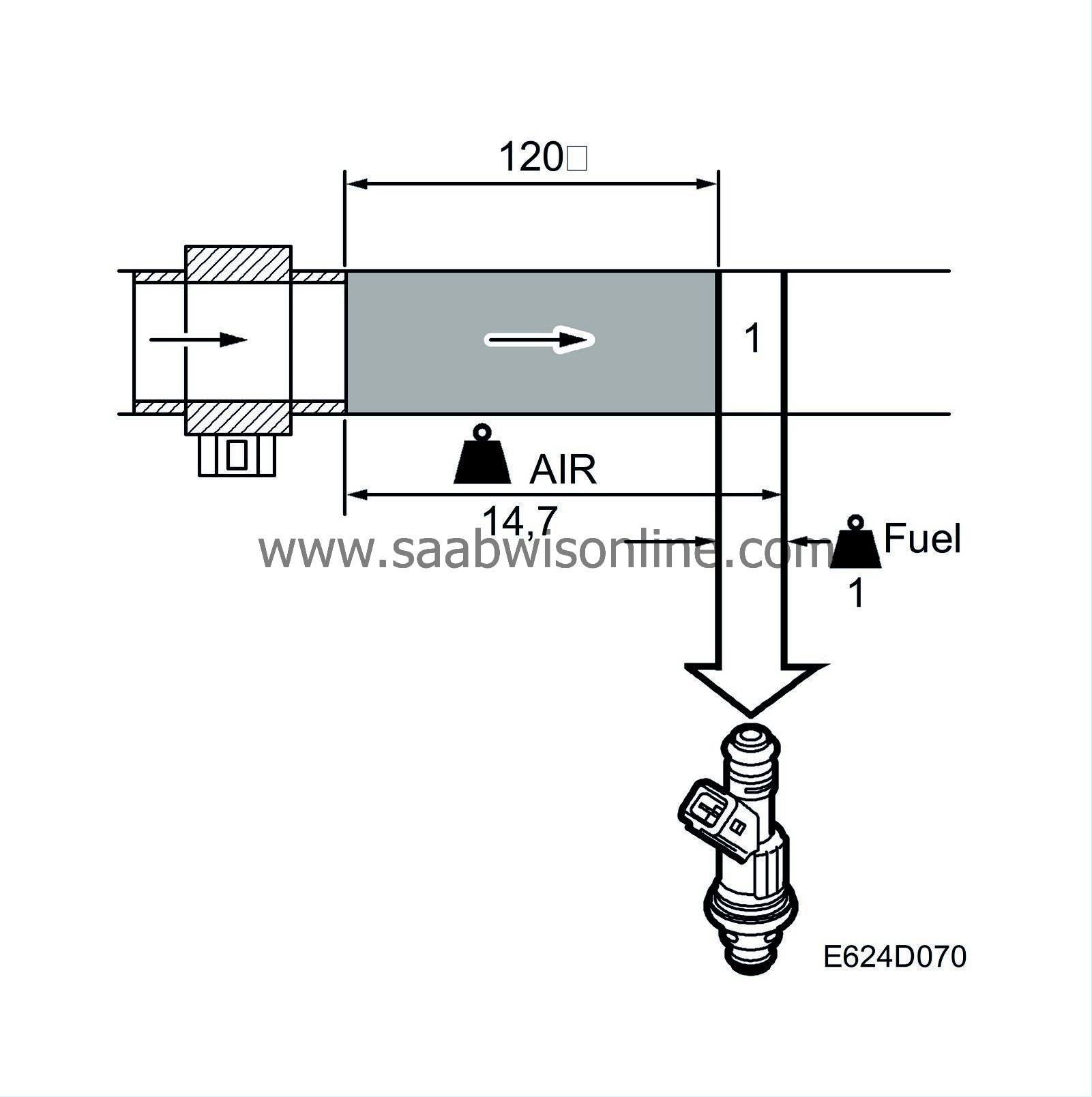Basic quantity, fuel
| Basic quantity, fuel |
However, the most useful value is the quantity of air drawn into each cylinder, as the fuel will be added to this air. The control module records the air mass drawn in during one engine revolution. Since the engine is a 6-cylinder, 4-stroke unit, three cylinders must have drawn in air simultaneously during this engine revolution. The air mass which passes the mass air flow sensor is divided by three and the control module now knows how much air has been drawn into each cylinder. The unit is now converted into milligrams air/combustion (mg/c).
To attain lambda 1, the fuel/air ratio must be 1 kg fuel to 14.7 kg air. Since we know the amount of air being drawn into each cylinder/combustion, the control module can easily calculate how much fuel to inject into the cylinders on each occasion. Milligrams air/combustion is divided by 14.7 and the result is the amount of petrol to be injected in mg/combustion.
The section Compensation gives an account of why the basic fuel quantity must occasionally be adjusted to a leaner or, most commonly, a slightly richer mixture to keep the engine running smoothly and maintain emission levels within limits.



